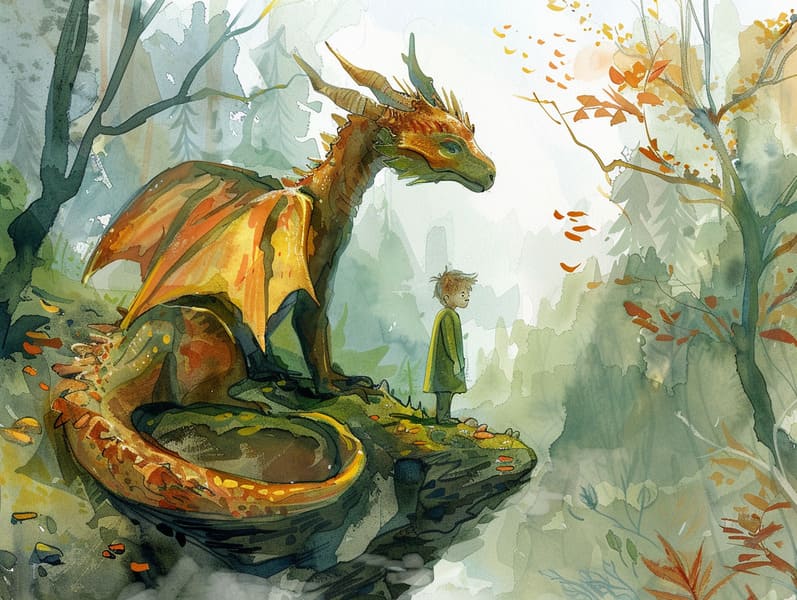
Historical fairy tales have enduring presence. These stories have been transmitted from one generation to the next centuries before they were ever inscribed. They originated from a variety of societies, including African traditions. They were initially conveyed among older generations, often carrying themes and messages relevant to the societal norms and beliefs of the time.
The famous Grimm duo, Jacob and Wilhelm, were among the first to collect many of these beloved narratives. Their published works, "Grimm's Story Collection," included narratives like "The Little Glass Slipper," "The Story of Hansel and Gretel," and "Little Snow White," which have since become pillars in the world of children's fairy tales. Similarly, the Danish author's magical fairy tales, such as "The Little Mermaid," and "The Ugly Duckling," have won hearts worldwide, solidifying their place in the pantheon of beloved fairy tales.
Despite being ancient, classic fairy tales remain as impactful as ever, especially as nighttime stories for kids. These delightful tales are now available in various formats, including vividly illustrated books, magical animations, and internet fairy tales.
Their lasting presence can be traced to several delightful features:
Valuable Lessons: Old fairy tales often illustrate important moral lessons. Tales like "The Tale of the Boy Who Cried Wolf" teach the benefit of sincerity, while "The Race of the Tortoise and the Hare" point out the virtues of resolve and meekness. These stories offer the young clear distinctions between correct and incorrect, guiding their moral compass in a tender yet deep way.
Warmth and Understanding: Traditional fairy tales frequently present individuals facing difficulties and adversities, inspiring readers to empathize with their struggles and back their triumphs. For instance, "Beauty's Beast" illustrates the benefit of looking past the exterior to appreciate the inner spirit of a being, building kindness and appreciation.
Cultural Insights: Many classic fairy tales are rooted in the cultural contexts from which they developed. Immersing in these tales can provide fascinating glimpses into different cultures, developing a sense of world understanding and recognition.
Creativity and Fantasy: The fanciful elements in classic fairy tales—magical spells—activate children’s creative thoughts. These stories move readers to enchanted realms, provoking fantasy ideas and a sense of delight that stays a lifetime.
Timeless fairy tales are not only whimsical but also pedagogical. They work as bewitching tools in promoting various brain and heart skills in young ones. When traditional fairy tales are spoken out loud, they develop linguistic abilities by showing new language items and sophisticated sentence structures. This practice also fosters listening abilities and attention, as children track the narrative, anticipating to see what happens next.
Furthermore, discussing the themes and characters of traditional fairy tales can strengthen critical thinking and thinking skills. Kids are taught to see patterns, guess what will happen, and grasp cause and effect. These reflections also promote children convey their thoughts and feelings, fostering their emotional intelligence.
In today’s information age, the proliferation of digital fairy tales has made these narratives more obtainable than ever. Web-based platforms and apps provide large libraries of Grimm's fairy tales that can be perused or heard anytime, anywhere. Fairy tales recited are particularly common, giving an delightful method for the young to engage with these whimsical stories. Spoken stories and narrated videos move more info characters and settings to life, often complemented by charming background sounds and soundtracks that elevate the tale experience.
The unending appeal of traditional fairy tales lies in their ability to change to today's world while keeping their basic principles. Contemporary takes of these stories often bring in more representative protagonists and modern settings, making them relatable to today’s audience. However, the underlying themes of fearlessness, kindheartedness, and justness remain unchanged, continuing to affect young listeners of all ages.
Old fairy tales also offer a sense of coziness and knownness. They make accessible a methodical narrative with a definite beginning, middle, and end, often concluding with the termination of conflicts and the triumph of virtue over vice. This predictability can be relieving for little ones, providing a sense of invariability in an unpredictable world.
Classic fairy tales continue to mesmerize and educate new generations, maintaining their charm and meaningfulness in modern society. As children's night stories, they put out a perfect blend of enchantment and education, facilitating moral values, empathy, and creativity. The accessibility of online fairy tales and the sought after status of fairy tales told out loud guarantee that these old stories remain within reach to new generations.
By conserving and making known these tales, we continue to praise the rich tapestry of storytelling and cultural heritage. Whether you are perusing a richly illustrated book, viewing a cyber library, or listening through an read-aloud story, the majesty of old fairy tales is always within reach. These stories show us of the unchanging influence of narratives and its ability to unite us across generations and cultures.
Be it you are discovering a vividly illustrated book, experiencing a cyber library, or listening on an spoken story, the wonder of Grimm's fairy tales is always within reach.
These stories remind us of the endless essence of tales and its ability to tie us across time and space, casting a charm that captivates and teaches alike.